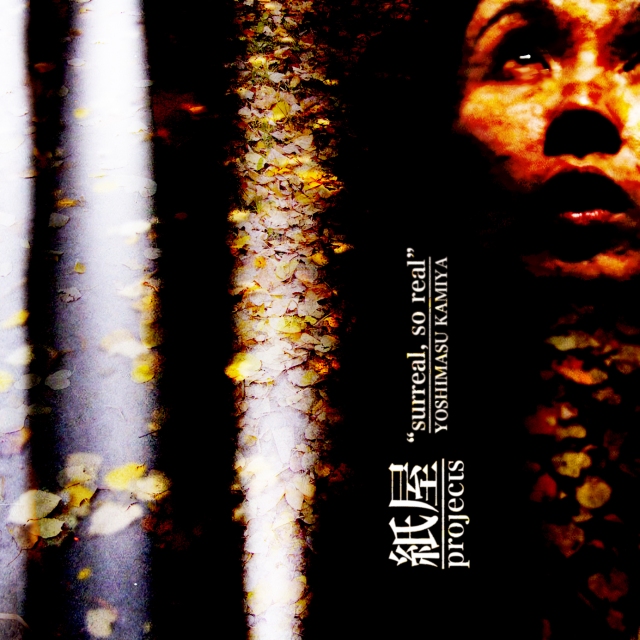download/purchase links:
- Bandcamp [name-your-price download x artwork]: available in 320 kbps MP3, FLAC, ALAC (Apple Lossless), AAC, or Ogg Vorbis formats, with digital and print-ready artwork (PDF and JPEG)
- SoundCloud [free download]: available in 320 kbps MP3 format
also featured on:
- SilentHillMedia.net [free download x artwork]: ZIP file containing 320 kbps MP3 format, with print-ready artwork (JPEG)
- SilentHillMemories.net [free download x artwork]: available in 320 kbps MP3 format, with digital artwork (PDF)
stream:
FEEDBACK
“This is a recommended download for ALL fans of Silent Hill’s music. It’s got a fresh and moody soundscape resonating with either etheral and melodic ambience or driving guitar riffs, and captivating drums that would impress even [Akira] Yamaoka himself.” – Fungo [of Twin Perfect], SilentHillMedia.net
“A very refreshing artist. His mixture of rock and atmospheric music is very unique. ‘Surreal, So Real’ is a fantastic example of his style, mixing traditional [Okinawan] music elements with timeless rock music, and even techno flavors. The result is very special, an eerie sound-scape with clearly defined melodic passages that act like puzzle pieces in a story.” – Rasec [Britain]
“You can hear that you put a lot of time in it and really put attention to the different layers and creating opposites. It’s dreamy but also raw reality! … Together with the story behind the EP, it makes this EP very interesting to listen to!” – ɱiɣuki ɖɑɣ [Netherlands]
GENERAL INFORMATION
release date:
July 20, 2012 [digital download]
genre:
instrumental | ambient rock | soundtrack
description:
surreal, so real can best be described as a collection of “ambient rock” soundtracks. Though sonically diverse in style and tone, all seven songs express the dualities of dreams vs. reality, serenity vs. discordance, and the moments when those balances become threatened.
Beyond “surreal, so real,” each storyline marks the beginning of an open-ended concept album whose characters, plots, and musical genres will transform based on creative fluidity.
track listing:
- Uchina noir: Ghosts of Chibichiri Cave
- She Who Wandered: Infatuation
- She Who Wandered: Chaos
- Uchina noir: The Cocktail Party
- Interlude [Limbo]
- Beneath the Sakura Trees: 死ぬ [Death]
- Beneath the Sakura Trees: 接吻 [Kiss]
ACKNOWLEDGMENTS &
PRODUCTION CREDITS
the title for Uchina noir: The Cocktail Party was taken from
Tatsuhiro Oshiro’s 1967 novella of the same name
synopses written with assistance from Andor Czigeledi
artwork model: Terumi Shimazu
infinite thank you’s to those who’ve assisted me with this project:
Maggie Peng, Andor Czigeledi, Noah Golderg, Jo-Ann Irvin,
Michael Daugherty, Miyuki Day, Jason Michael [Dah2]
all tracks written, performed, and recorded by
Joseph Yoshimasu Kamiya
in loving memory of Auntie Irene Ike [1962 ~ 2008]
and Grandma Yoshiko Kamiya [1915 ~ 2012]
UCHINA NOIR:
GHOSTS OF CHIBICHIRI CAVE
“…had the [Japanese] military regarded non-combatants as coming under their protection, evacuations [of Okinawan civilians] would have been unnecessary and the collective self-killings that took place in the Kerama Islands, Iejima, Yomitan, and Mabuni would never have been carried out. In reality, non-combatants were far from being protected by the military. Instead, they found themselves in a situation where they were attacked by tigers at the front gate (the enemy troops) and wolves at the back gate (their own troops).”
“Re-examining the History of the Battle of Okinawa,” Masahide Ota, 1985
Synopsis: April 1, 1945 – Yomitan, Okinawa, Japan – One hundred forty Okinawan men, women, and children seek refuge in Chibichiri Cave, sheltering themselves away from the heavy crossfire of the U.S. and Japanese militaries*. Eighty-four of these same men, women, and children would commit suicide the following day.
* Okinawa Prefectural Government records show that nearly 1/3 of the population at the time – over 150,000 civilians (including 11,483 children) – were killed during World War II’s Battle of Okinawa (March 26 through September 7, 1945). Crippled by the horrors of war as well as the horrors fueled by Japanese military propaganda (and not to mention Japan’s samurai-era doctrine of “honorable” death or sacrifice), many civilians would resort to suicide using military-issued hand grenades, by jumping from high cliffs, or – in the case of Chibichiri Cave – by slaughtering one another.
UCHINA NOIR:
THE COCKTAIL PARTY
“Under the most desperate and unimaginable circumstances, Okinawans directly experienced the absurdity of war and atrocities it inevitably brings about.”
Okinawa Prefectural Peace Memorial Museum, 1975
Synopsis: In U.S.-occupied Okinawa, Japan, a local teenage girl is raped by a U.S. serviceman. As they come to terms with the fact that justice may never be served*, the girl’s family is also forced to deeply reexamine their feelings toward the U.S. military’s postwar occupation of their country.
* Since 1945, 14 U.S. military bases have been built on the islands of Okinawa. According to the Okinawa Times (“Crimes Committed and Incidents Concerning U.S. Military on Okinawa,” Millard, October 12, 1995), there have been at least 21 reported cases of women – including underaged girls – being murdered or raped by U.S. servicemen between 1955 and 1995 (the most notorious being the 1995 gang-rape of a local 12-year-old girl perpetrated by 2 U.S. Marines and 1 U.S. Navy Seaman). Many of these violent crimes were charged under U.S. jurisdiction, which often resulted in much weaker punishments for those who were actually convicted.
